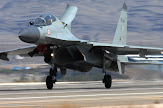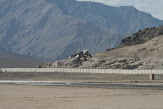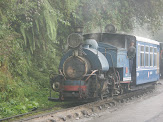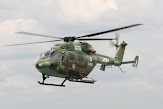LoC breach: Alerted, Army laid a trap for Lashkar men before 5-day firefight began
Posted online: Mar 26, 2009 at 0214 hrs in the Indian Express
MUZAMIL JALEEL & MIR EHSAN
SRINAGAR : At the end of the five-day Kupwara encounter that killed eight Army personnel and 17 Lashkar operatives, all evidence points to “extremely sophisticated planning and logistics” behind the biggest infiltration attempt across the Line of Control this year, security officers involved in the operation said.
Army chief General Deepak Kapoor said the high casualties of Indian Special Forces — all eight from the crack 1 Para — indicated a “high level of military training.” As did the nature of the infiltration attempt — through treacherous terrain and the recovery of highly detailed maps of the forests, along with GPS devices, radios, satellite phones, snowboots and ice axes.
At 10,273 feet, a narrow, winding road over the Sadhna Pass — its surface covered by frozen ice — is the only entrance into the stunning valleys of Karnah in the Kashmir Valley. To its left, in the vast isolated swathe, walled by the snow-capped peaks of the Shamsabari range, is the heavily guarded Line of Control. It was here on March 19, that 25 militants sneaked in — watched by both the Army and the Lashkar-e-Toiba.
Sources have confirmed to The Indian Express that militants who crossed over were well on their way to hideouts in Rajwar where Lashkar’s commander Abu Saad was waiting. Saad, it’s learnt, had sent three of his experienced militants to “receive” this new group. But this time, the Army knew and it had Lashkar’s key OGWs (Over Ground Workers) under watch.
Sources said intelligence from across the LoC had alerted security agencies a week in advance. Moreover, early this month, two smaller groups of militants had already crossed over into the Rajwar area and a third group of 10 had sneaked into the valley through Gulmarg. “So we were expecting them. We knew they were coming but our information was about a group of 10 militants,” a source told The Indian Express.
Army officials say the infiltration was launched most probably from somewhere in the Lepa valley. After they crossed over, the militants trekked the Shamsabari’s high ridges that divides the Keran sector from the Kashmir bowl.
In parallel, the Army began moving to lay an ambush. The plan was to avoid engaging the militants near the LoC and thus prevent them from retreating. “They were allowed to sneak in under constant watch,” a source said. The infiltrators were first spotted at Ragni post where one militant was killed. The first major contact with the militants took place at around 3 am on March 20 at Drangyari. “Three were killed there,” said Army spokesman Col J S Brar, “one of them escaped and was killed at Chamb”.
By then, the group had scattered under night’s cover and the Army had expanded its operation across the Shamsabari range, pushing reinforcements into the dense Hafruda forests — one of the thickest stretched across Kupwara and Handwara districts. The Army’s Trehgam Brigade, two battalions of the Rashtriya Rifles and para commandos were deployed. Sources said the Lashkar “reception party” had already joined the infiltrators but somehow the guide possibly lost his way.
The next afternoon, on March 21, Major Mohit Sharma along with a party of para commandos, decided to go deep inside the Hafruda forests. A group of militants, however, had been hiding over the ridge — which gave them an immediate advantage. Major Sharma and three of his men were killed in the firefight.
By Monday, the Army had sent out dozens of parties inside Hafruda, expanding the operation to almost an area of 20 sq km. Fierce gunbattles raged across the area. Close-quarter encounters took place at two places — one inside the Hafruda forests and another in Drangyari. Five militants were killed while four Army men, Havaldar Rakesh Kumar, Nayak Sanjay Anna and Para troopers Manoj Kumar and Shabir Ahmad, were killed. All were officers and men from the Para unit — equipped with AK 47 and Israeli Tavor rifles, new generation night-sights and tracking equipment.
On Tuesday, the troops were again in control and the cordon had been tightened around the militants holed up in Hafruda. Seven militants were killed that day.
Army officials said they found this group of infiltrators “exceptionally trained” and “well-kitted” wearing multilayered warm clothing, jackets, snowshoes and even armed with ice axes. The militants also had modern communication gadgets and were using GPS, compasses, one Thuraya set and Army maps. “They had 10 radio sets as well. We also recovered 23 AK rifles,” said Col Brar. “They had boots and axes, the kind we use in Siachen. The boots were made in Iran.”
The militants, who communicated in codes, also had elaborate maps of Kupwara and Handwara especially of the dense forest ranges. The seriousness of the plan was evident in the specially tailored T-shirts for this group. The T-shirts had “Jihad is my life, Shahadat (martyrdom) is my real life” printed on them. There were T-shirts which “Commando” inscribed as well.
The Army estimates that the level of infiltration will go up in coming months as the snow starts melting in the passes. “Over 300 militants are waiting to infiltrate from 40-50 terror camps across the LoC,” the Army Chief said. Army officers said that with less than 400 active militants estimated in the valley, handlers across the border are getting desperate to send in more foot soldiers.
(with Manu Pubby, New Delhi)
Wednesday, March 25, 2009
Article on the recent fire fight in Kashmir
Posted by Anant Dhamala at 11:47 PM
Subscribe to:
Post Comments (Atom)










0 Comments:
Post a Comment